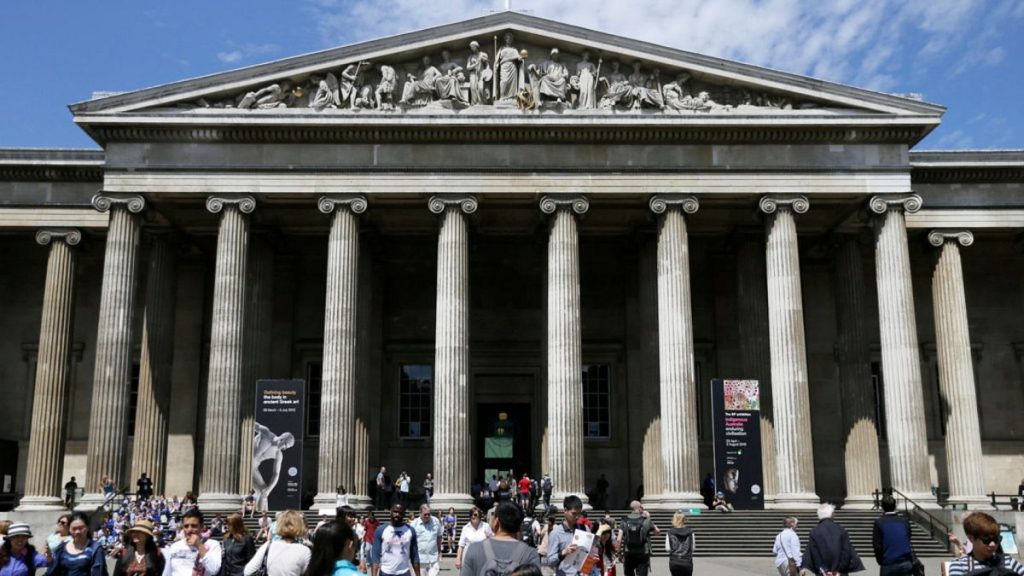The debate surrounding the repatriation of artifacts held in the British Museum has intensified, particularly regarding the Parthenon Sculptures, also known as the Elgin Marbles. A recent meeting between the British and Greek prime ministers has reignited discussions about the sculptures’ return to Greece, their place of origin. While reports suggest a potential shift in the British government’s stance, official statements maintain that the decision rests with the British Museum and that current legislation preventing their permanent removal remains unchanged. This long-standing dispute centers on the sculptures’ acquisition by Lord Elgin in the early 19th century, with conflicting narratives portraying him as either a preservationist safeguarding the marbles or a colonial plunderer exploiting Greek heritage.
The controversy surrounding the Parthenon Sculptures has broadened into a wider discussion about the repatriation of artifacts held within the British Museum. A common, albeit hyperbolic, claim asserts that the museum would be emptied if all allegedly stolen artifacts were returned. However, a closer examination reveals that the vast majority of the museum’s collection originates from within the UK, predominantly England. A search of the museum’s online catalogue reveals over 650,000 artifacts from the UK, significantly dwarfing the approximately 66,000 items from Greece. While acknowledging that its online catalogue represents only about half of its total holdings, the British Museum emphasizes the ongoing nature of cataloguing and research, with continuous updates and additions to the database. It’s crucial to note that the term “artifact” encompasses a wide range of items, from everyday objects to grand sculptures, and the methods of acquisition vary considerably.
While the sheer volume of artifacts from England dominates the British Museum’s collection, it’s undeniable that some of the most iconic and controversial pieces originated from other countries. These standout exhibits, often the subject of repatriation debates, include artifacts such as statues from the Mausoleum at Halicarnassus (present-day Turkey), the Bust of Rameses the Great (Egypt), and the Rosetta Stone (Egypt). The Rosetta Stone, a crucial key to deciphering hieroglyphs, holds immense historical significance. Its discovery during Napoleon’s Egyptian campaign and subsequent transfer to Britain under the Treaty of Alexandria has led to ongoing calls for its return by Egyptian authorities who view its presence in the British Museum as a symbol of cultural appropriation.
Beyond the Rosetta Stone, numerous other artifacts within the British Museum are the subject of repatriation claims. Nigeria has actively pursued the return of the Benin Bronzes, a collection of sculptures and royal objects seized by British forces in 1897. Nigerian officials assert that these artifacts were looted and rightfully belong to their communities of origin, regardless of their current safekeeping within the museum. The British Museum, while maintaining positive relations with the Royal Palace in Benin City, remains open to discussions regarding the bronzes. Similarly, Ethiopia seeks the return of the Maqdala Collection, comprised of liturgical objects and other treasures plundered by British soldiers in 1868. Although some items have been returned, others remain in the UK, with the British Museum expressing a long-term goal of lending the sacred tabots to an Ethiopian Orthodox Church in Britain for appropriate care within their religious traditions.
The issue of repatriation extends beyond the British Museum and resonates across European institutions grappling with the legacy of colonialism. Museums throughout Europe face mounting pressure to return artifacts acquired during colonial eras, amidst accusations of illegal seizure and cultural dispossession. The complexities of repatriation are further underscored by instances of theft and loss within museums themselves. The British Museum faced scrutiny in 2022 following the discovery of approximately 2,000 missing items, highlighting the challenges of safeguarding vast collections and the potential for illicit trade in cultural artifacts.
The debate surrounding repatriation reflects a complex interplay of historical, cultural, and ethical considerations. The arguments for returning artifacts often center on the principles of cultural heritage, historical justice, and the right of nations and communities to possess their own cultural patrimony. Proponents of repatriation argue that the removal of artifacts, particularly during periods of colonialism, represented a form of cultural dispossession and that their return is essential for healing historical wounds and fostering cultural identity. On the other hand, arguments against repatriation often emphasize the role of museums in preserving and showcasing global cultural heritage, arguing that major museums offer broader access to artifacts and facilitate international scholarship and understanding. Concerns about the safety and preservation of artifacts in their countries of origin are also sometimes raised. The ongoing debate regarding the repatriation of artifacts held in the British Museum, and indeed in museums worldwide, underscores the need for open dialogue, respectful engagement, and the pursuit of equitable solutions that address the complex legacies of colonialism and cultural exchange.














